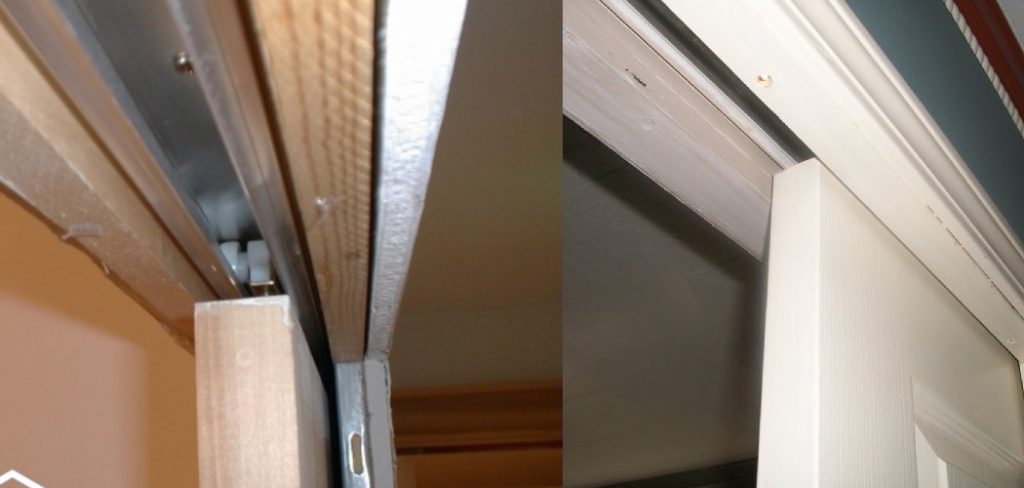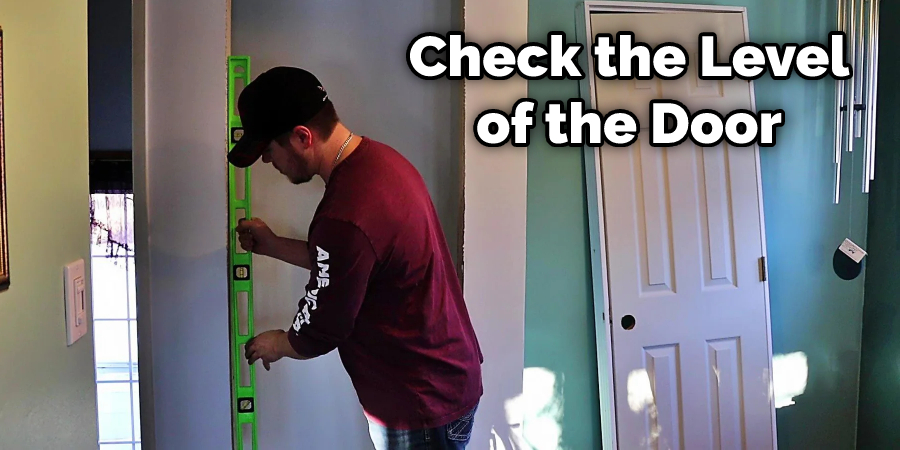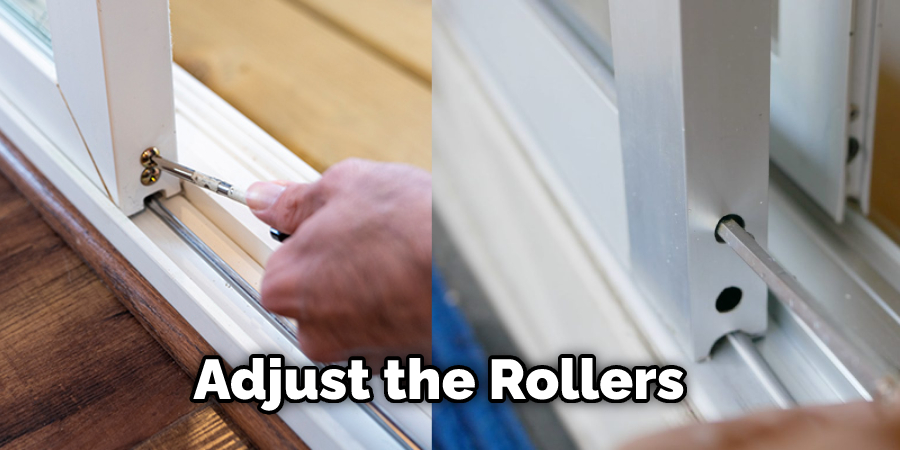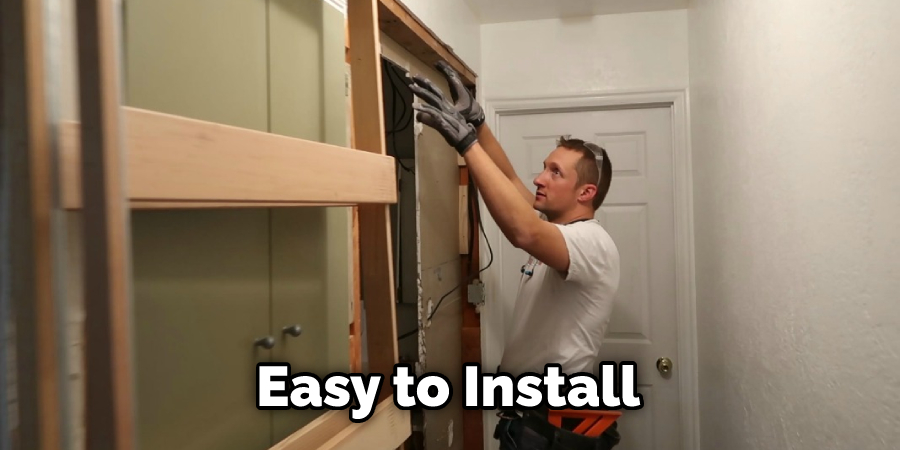Pocket doors are a convenient way to create more space in a room. However, if the door rubs against the frame, it can be frustrating and difficult to open and close. This blog post will show you how to fix a pocket door that rubs. We will also provide tips on preventing this from happening in the future. Keep reading for more information.

Summary: Fixing a pocket door that rubs is easy with these 11 steps. Start by adjusting the level and aligning the door, then clean the rollers and adjust the track. Also adjust the rollers, clean the tracks, adjust the hinges and add lubricant. To finish, remove any obstructions and replace the door if necessary. If all else fails, call a pocket door specialist for help.
What Causes a Pocket Door to Rub?
There are several reasons why a pocket door might rub against the frame. The most common reason is that the door is not level. If the door is not level, it will rub against the frame when you try to open or close it. Another common reason is that the door is not properly aligned in the frame. If the door is not aligned, it will also rub against the frame. A pocket door might rub against the frame for a few other reasons.
The first is that the track is not level. If the track is not level, the door will not be able to slide smoothly. The second is that the rollers are dirty or damaged. If the rollers are dirty, they will not be able to roll smoothly. The third is that something is blocking the door. This could be a piece of furniture, a rug, or anything else that is in the way.
Things You Will Need
To fix a pocket door that rubs, you will need the following:
- A level
- A screwdriver
- A hammer
- A drill
- A saw
- A chisel
- A file
- Sandpaper
- A new pocket door (if necessary)
11 Ways How to Fix a Pocket Door That Rubs:
1. Adjust the Level
The first thing you need to do is check the level of the door. To do this, you will need a level. Place the level on the door and see if it is level. If the door is not level, you will need to adjust it. First, loosen the screws that hold the door in place. Then, use a screwdriver to raise or lower the door until it is level. Once the door is level, tighten the screws.

2. Align the Door
If the door is not aligned, it will rub against the frame. To align the door, check to see if the hinges are loose. If they are, tighten them with a screwdriver. Next, check to see if the tracks are bent. If they are, use a hammer to straighten them. Finally, check to see if the door is warped. If it is, you will need to replace it.
3. Clean the Rollers
If the rollers are dirty, they will not be able to roll smoothly. To clean the rollers, first, remove them from the door. Next, clean them with a cloth. You can also use a toothbrush to clean the rollers. Once they are clean, put them back on the door.
4. Adjust the Track
If the track is not level, the door will not be able to slide smoothly. To adjust the track, use a screwdriver to loosen the screws that hold the track to the header. Then, use a level to check if the track is level. If it is not, make the necessary adjustments until it is level. Once the track is level, tighten the screws to secure it in place. If the problem persists, it may be due to a bent track. To fix this, you will need to replace the track.
5. Adjust the Rollers
If the rollers are not rolling smoothly, you must adjust them. To do this, first, remove the rollers from the door by unscrewing them. Next, use a file to smooth down any rough edges on the rollers. Finally, put the rollers back in place and screw them in tightly. If the problem persists, you may need to replace the rollers entirely. To do this, first, remove the old rollers. Next, take the new rollers and put them in place. Finally, screw them in tightly.

6. Clean the Tracks
If the tracks are dirty, they will not be able to roll smoothly. To clean the tracks, remove any debris that might be stuck in them using a brush or a vacuum cleaner. If there is any built-up grime, you can use a degreaser to remove it. Once the tracks are clean, dry them off completely before moving on.
7. Adjust the Hinges
If your pocket door is rubbing on the top or sides, it’s probably because the hinges are off. To fix this, you’ll need to adjust the hinges. To do this, loosen the screws that hold the hinge in place. Then, tap the hinge with a hammer to move it into the correct position. Finally, retighten the screws. If your pocket door is still rubbing after adjusting the hinges, you may need to replace the hinges.
8. Add Lubricant
If the pocket door is still rubbing, you may need to add lubricant to the tracks. This will help the door to slide smoothly. To do this, first, clean the tracks with a dry cloth. Then, apply lubricant to the tracks using a brush or roller.
Allow the lubricant to dry before opening and to close the door. Lubricant can also be added to the rollers. To do this, first, remove the rollers from the door. Next, apply lubricant to the rollers using a brush or roller. Finally, put the rollers back in place and screw them in tightly.
9. Remove Obstructions
If the pocket door is still rubbing, there may be an obstruction in the way. To remove the obstruction, first, identify where the door is rubbing. Then, remove any obstacles, such as furniture or rugs. You may also need to remove the door from its track and clean out the track itself. A misaligned door can also cause obstructions. In this case, you will need to adjust the door to be level.

10. Replace the Door
If the pocket door is still rubbing after trying all of the above methods, it may be time to replace it. To do this, first, remove the old door by taking out the screws that hold it in place. Next, measure the space for the new pocket door and cut it to size. Finally, install the new door using screws or nails. Replacing a pocket door is a fairly easy process, but it is important to make sure that the new door is the correct size. Otherwise, you may end up with a pocket door that rubs.
11. Call a Pocket Door Specialist
If you’ve tried all of the above methods and your pocket door is still rubbing, it’s time to call a pocket door specialist. They will be able to diagnose the problem and fix it quickly.
How Much Does It Cost to Fix a Pocket Door?
The cost of fixing a pocket door depends on the problem. For minor adjustments, such as lubricating the tracks or adding new rollers, you can expect to pay around $50. For more major repairs, such as replacing the track or hinges, you can expect to pay around $100. Finally, if you need to replace the pocket door itself, you can expect to pay around $200.
Tips and Warnings on How to Fix a Pocket Door That Rubs
Tips:
- Be sure to measure the door before making any adjustments.
- Check the door’s alignment and ensure it is level.
- Use a hammer and screwdriver to adjust the screws that hold the door in place slightly.
- If the door still rubs, use a file or sandpaper to smooth down any rough edges.
- Test the door by opening and closing it several times to make sure the changes have been effective.
Warnings:
- Do not over-tighten the screws, as this could damage the door.
- Be careful not to damage the door while making adjustments.
- Make sure the door is properly aligned before making any adjustments.
- Make sure the door is level before making any adjustments.
FAQ
Is a Pocket Door Good for a Bathroom?
A pocket door is a good option for a bathroom because it doesn’t take up any space when it’s open. This means you can have a larger bathroom without worrying about the door taking up space. Pocket doors are also easy to install and can be added to an existing bathroom.

Are Pocket Doors Easy to Install?
Pocket doors are relatively easy to install. The most difficult part is cutting the door to size. Other than that, pocket doors are easy to install and can be done by most people. Pocket doors can be added to an existing door opening or installed as part of new construction. If you’re installing a pocket door as part of new construction, you’ll need to make sure the wall is thick enough to accommodate the door.
Do Pocket Doors Come in Different Sizes?
Pocket doors come in a variety of sizes. The most common size is 36 inches, but they can also be found in 24, 30, and 48-inch sizes. Pocket doors can also be custom-made to fit any size opening. If you’re looking for a pocket door for your home, be sure to measure the opening first to ensure you get the right size.
What Is the Best Way to Hang a Pocket Door?
The best way to hang a pocket door is by using screws or nails. Screws are best because they will hold the door in place better than nails. Nails can also be used, but they may not hold the door as securely. Therefore, it is important to make sure the screws or nails are properly installed, so the door doesn’t fall off.
Conclusion
This article has provided you with some tips on how to fix a pocket door that rubs. By following these tips, you can make sure that your door is functioning properly and that it doesn’t take up too much space. Please feel free to reach out to us if you have any questions or need help with anything pocket door related. Thanks for reading!
You May Also read: How to Fix Bathroom Stall Door Latch
